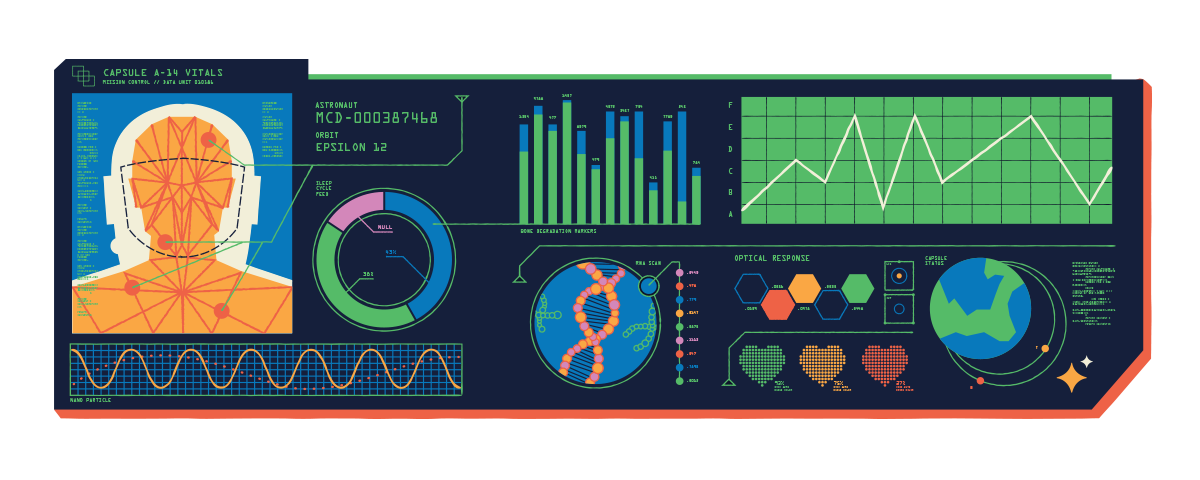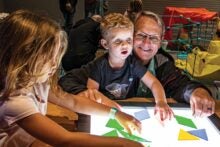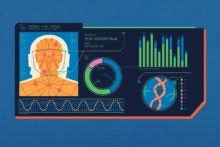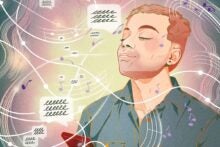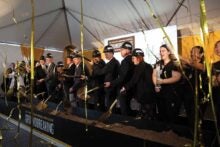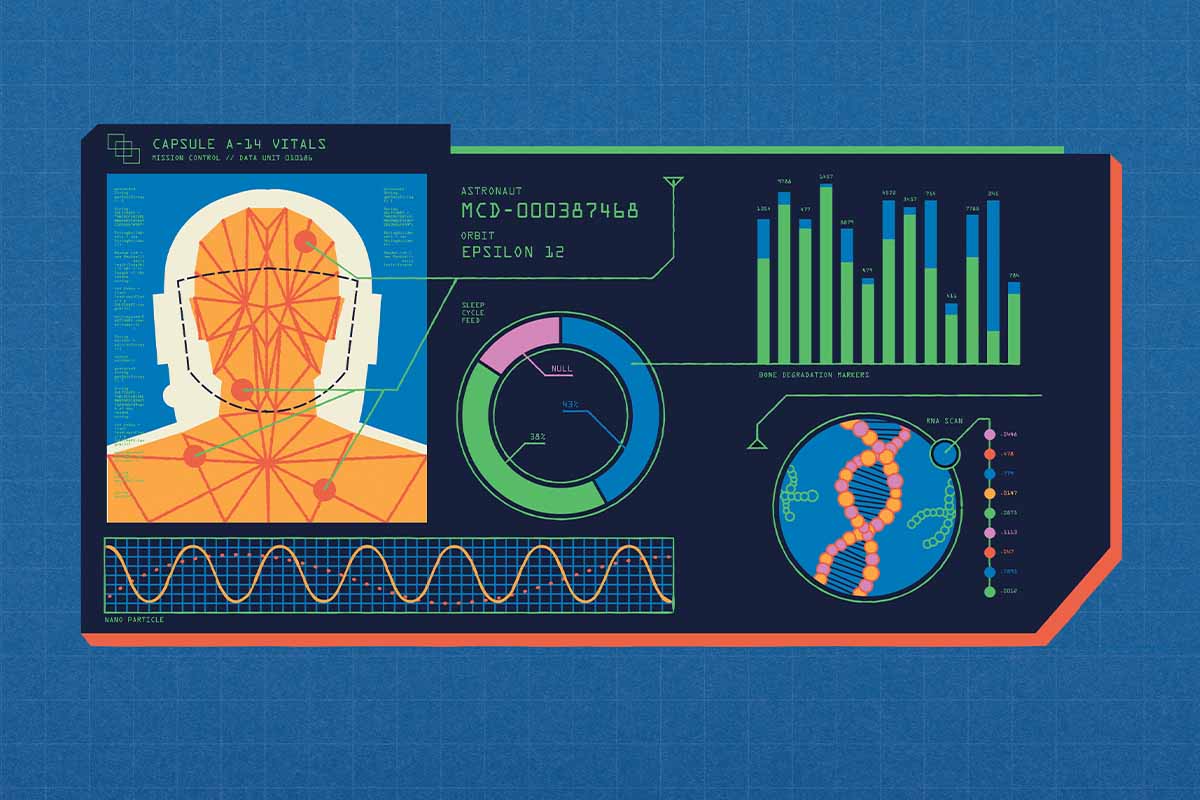
Since NASA first sent Alan Shepard into space for a 15-minute trip in 1961, human space flight has become longer and more common. For the past 24 years, the International Space Station (ISS) has been continuously crewed while circling in low-Earth orbit, with astronauts staying onboard for an average of six months.
Understanding how flights and stays in space impact the human body has always been essential for these expeditions. As NASA aims to develop a sustainable presence farther in space, it’s more important than ever to study human health in such a challenging environment. And as commercial crewed space flights — including up to six this year — are becoming more popular, there is a need and opportunity to study health across varying populations.
This is why UCF College of Medicine researchers are investigating how the extreme microgravity and radiation in space alter the human body, which can also provide insight into improving health on Earth.
A Clear Look at Vision
Seventy percent of astronauts on the ISS experience some sort of swelling in the back of their eyes, according to NASA. This symptom is linked to a condition called space flight-associated neuro-ocular syndrome, or SANS, which results in decreased near vision. Weightlessness causes blood and cerebrospinal fluid to move toward the head, which is believed to cause structural changes in not only the eyes, but the brain, too.
UCF Health ophthalmologist Mehul Patel is part of a study that aims to understand these changes and their impact on vision. The study utilizes a noninvasive approach called optical coherence tomography angiography (OCTA) with a comprehensive imaging device called the Spectralis HRA+OCT2. The OCTA approach and tool allow doctors to better examine the structure and blood flow of eyes.
“All prior studies have used MRIs and other ways to image the back of the eye with photos,” Patel says. “But this newer OCTA technology can be compared to a 4K or 8K TV and those high-definition cameras that are allowing you to see greater depth and clarity … to really look at detail and definition of blood flow and vascular changes in the back of the eye.”
Decoding the Mysteries of Aging
If humans are to eventually live in space, aging — which is still a mystery in some regards on Earth — will also be important to understand. It’s unclear yet if space environments speed up or slowdown aging.
Professor and researcher Michal Masternak leads a UCF-based lab involved with the Translational Research Institute for Space Health, a NASA-funded effort that collects and studies data and biospecimens from commercial space flight participants. They are helping develop protocols for the Genomics and Space Medicine project (also called Space Omics) at the Baylor College of Medicine Human Genome Sequencing Center, which aims to study space travel’s impact on human health.
Currently, Masternak and his team are studying specimens from Axiom Missions 2 and 3. Among the phenomena they are investigating is cellular senescence, which occurs when cells lose their ability to divide and grow. Over time, senescent cells accumulate in tissue and are believed to contribute to aging and age-related diseases. Scientists may even be able to use cellular senescence to advance cancer therapy by stopping the spread of the disease. To better understand both of these, Masternak and his team are looking into circulating in blood noncoding micro-RNAs, small molecules influencing different genes.
“We are focusing on cellular senescence because [it’s] something novel in the process of aging, and there are different interventions that actually can clear senescence cells from the body,” he says. “By studying this in this accelerated process, we may be able to develop pharmacological interventions before or after flight for astronauts in the future, [as well as for people on Earth].”
Examining Atrophy in Orbit
On Earth, aging men and post-menopausal women lose up to 0.5% to 1% of bone density per year. NASA reveals that astronauts can lose up to 1% to 2% per month. This significant bone loss can place space travelers at risk for bone fracture and early-onset space flight-induced osteoporosis.
The reason for this accelerated bone loss, Professor Melanie Coathup says, is likely the reduced stimulus of weight on the human body that is needed to maintain healthy mass and function in bones and muscles. This also explains why weight-bearing bones like the spine, hips and legs are especially affected.
Astronauts combat this issue through regular exercise and healthy diet. However, taking drugs like bisphosphonates, commonly used to treat osteoporosis on Earth, is not a sustainable solution in space due to long-term side effects, Coathup says.
Among the approaches she’s exploring is the use of nanoparticles in creating materials to prevent bone loss. She and Pegasus Professor of Material Science and Engineering Sudipta Seal have developed a nanoparticle formulation that can be injected into the body to reduce bone loss from radiation treatment in cancer patients. The material could also potentially be used for space travelers, and could even work better in that environment.
“The radiation that may harm us seems to trigger the [nanoparticle] material to better protect us,” Coathup says. “Radiation alters the oxidation state on the surface of the nanoparticle and it can then trigger electron changes that may make the nanoparticles better at neutralizing the harmful free radicals that radiation exposure generates in the body.”
To further prepare for a future where humans can spend extended time in space, UCF recently partnered with biotechnology company Vaxxinity to develop vaccines to mitigate bone and muscle wasting for astronauts as well as people on Earth.
“Space travel is our future. It’s a great opportunity to help to discover new treatments and ways to improve health,” Coathup says.
